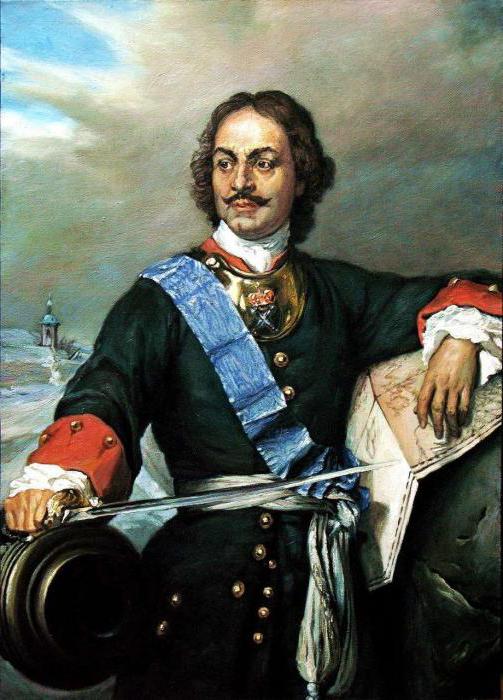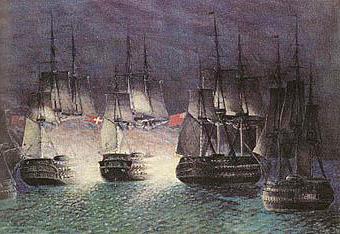The battle of Grengam was one of the most significant naval battles of the early XVIII century. This naval battle finally consolidated the reputation of the young Russian Empire as a sea power. Its importance was also in the fact that the battle of Grengam brought the Russian fleet an important victory, which was won at the most critical moment. Sweden could get the help of England - the Queen of the Seas, and in this case the exit routes of Russian ships to the shores of Northern Europe could be in jeopardy. The battle squadron of the English fleet was located in the Baltic Sea and was ready for joint maneuvers with the sailing fleet of the Kingdom of Sweden. The right place, the right actions brought the victory of Russia, the victory that Peter the Great was so proud of.

Students of history lessons are asked questions about the year in which the Battle of Grengam was, who was the enemy of Russia, and whether the battle was won. We will try to answer these and other questions in detail.
The background of the battle
The year of the Battle of Grengam was marked by the rapid successes of the young Russian Empire in shipbuilding and naval navigation. The Russians quickly learned both the classical methods of sailing ship battles and the skills acquired from pirates. These achievements could not help but bother the major naval powers. The need for any specific actions became apparent after the Battle of Gangut, in which the Russian fleet defeated the Swedish military detachment. The forces of England and Sweden formed a military alliance, the main purpose of which was to deter Russian naval forces and prevent the dominance of the Russian fleet in the Baltic Sea. In order to demonstrate its defense alliance, the combined Anglo-Swedish squadron entered the Baltic Sea and began to approach Ravel.

Such maneuvers did not force the Russian tsar to seek ways of reconciliation with a powerful enemy, and the squadron retreated into the waters of Sweden. When the Russian emperor found out about this retreat, he ordered the ships of the Russian fleet to be transferred from the Åland Islands to Helsingfors. Around the flagships, several boats were designed to patrol neutral waters. Soon, one of the boats ran aground, and her crew was captured by the Swedish sailors. Peter was informed about the loss of the boat, he ordered the fleet to be returned to its old base - to the coast of the Aland Islands.
Reconnaissance
July 26, 1720 61 galleys and 29 boats of the Russian fleet began to approach the Aland Islands. The flotilla was commanded by General M. M. Golitsyn, the confidant of Peter the Great. At the forefront of the flotilla were small boats intended for reconnaissance. Thanks to such forethought, Golitsyn discovered that between the islands of Fritsberg and Lemland a Swedish squadron was waiting for him.
Enemy
Swedish naval ships were commanded by an experienced naval commander, Admiral C. Schöbland. His squadron included four frigates, one battleship, nine smaller vessels and boats, and more than a thousand personnel.
In the conditions of a gale and high waves, the naval battle had to be postponed. The Russian squadron headed for Fr. Grengam to prepare his own position for the impending battle. Thus began the battle of Grengam.
1720 for the Russian fleet meant experienced commanders, strong ships, already existing experience of victories in naval battles. Therefore, when the flagship of the enemy went closer, he was given a worthy rebuff.
Admiral of the Swedish fleet K. Schöbland had 156 guns on board his warship, so he did not particularly seek to hide from single shots of Russian guns. Approaching the desired distance, the Swedish ship began to massively shell Russian ships from all the available guns.
Battle preparation
Having studied intelligence, General Golitsyn was preparing a large-scale naval battle. He decided to go to a small stretch of Granhatm (Grengam). In this place, according to the available pilot maps, the narrowest straits and extensive shallows were discovered. In the event of active hostilities, there was a threat of blockade of Russian ships by the forces of the Swedish squadron. Golitsyn envisioned options for an unfavorable outcome of the battle, ensuring the retreat of Russian ships to their former positions in the Fliessund Strait. Having secured the departure of the Russian ships, General Golitsyn gave the order to begin the Battle of Grengam.
Battle progress
On July 27, 1720, the Swedish squadron, using the tailwind, began to move to the strait, where the ships of the Russian fleet were concentrated.

Golitsyn gave the order to slowly retreat, luring the Swedes into a prepared trap. When four frigates of the Swedish fleet, led by the flagship, entered the Strait of Fliesosun, the Russian squadron took its former position, blocking the Swedes from leaving the trap. Light rowing boats of the Russian fleet attacked enemy ships from all sides. Trying to get away from the boarding attack, the Swedish ships began to turn around, but ran aground. Thus, they further complicated the position of their remaining ships - heavy frigates blocked the exit from the trap and made it difficult for other Swedish ships to maneuver. A fierce boarding battle lasted more than four hours and was crowned with the crushing success of the Russian fleet. The Russian sailors managed to capture four Swedish frigates, the rest of the ships, led by the flagship, with great losses, managed to get out of the trap.
Combat losses
The battle of Grengam claimed the lives of 82 Russian sailors, 203 people were injured. The enemy side lost 103 people killed and 407 wounded. The Russian ships suffered significant damage, but the Swedes lost four of their frigates forever.
Battle results
Despite significant losses, the battle of Grengam had an impact on the balance of power in the seas of the world. The convincing triumph of the Russian rowing fleet over Sweden's sailboats was clear evidence of the naval art of the Russian admirals. The Swedish navy suffered significant losses and seriously lost ground in the Baltic and North Seas. This battle strengthened the prestige of Russians in European politics, they began to regard Russia as a serious player on the world stage. The results of the battle prompted England and its allies to conclude the Nishtadt peace with Russia .
Memory of the battle
For military merit, Peter the 1st ordered to knock out a special medal intended for all participants in the sea battle. The obverse of the medal was decorated with the profile of Peter the 1st, on the reverse there was an inscription “Diligence and fidelity. Surpasses greatly. "
It was noted below: July 27, 1720 - the day the battle of Grengam took place. The date of this naval duel is well known to military historians studying the victories and defeats of the Russian fleet. And General Golitsyn received a sword from the Russian emperor, decorated with the inscription "For a good team."
Church of st. Panteleimon
A worthy triumph over a serious adversary was marked in the most appropriate way. It so happened that two significant victories of the Russian fleet in the Grengam and Gangut battles were won in different years, but had the same date - July 27. This day in Orthodoxy is dedicated to the memory of St. Panteleimon. Therefore, it was decided to build a chapel in St. Petersburg dedicated to this saint. In 1722, a ceremonial consecration of a small church took place, which replaced the chapel.

Much later, it was decided to radically restore the church and dedicate it to sailors who died in the Baltic Sea. This decision was implemented many years later. Only in 1914, with a large crowd of people and in the presence of members of the royal family, the Panteleimon Church was inaugurated . Thanks to the initiative of the Russian military-historical society, the restored church was decorated with marble boards on which all regiments that took part in the naval battles of the beginning of the 18th century were listed.